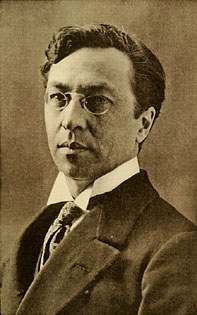Origine: Da Sguardo al passato, in Tutti gli scritti.
Vasilij Vasil'evič Kandinskij frasi celebri
Origine: Da Scritti intorno alla musica, a cura di Nilo Pucci, La Nuova Italia, 1979.
Origine: Da Dello spirituale nell'arte, in Tutti gli scritti, a cura di P. Sers, Feltrinelli, 1989.
1973
Punto, linea, superficie
1973
Punto, linea, superficie
1968
Punto, linea, superficie
1968
Punto, linea, superficie
“L'occhio aperto e l'orecchio vigile trasformano le più piccole scosse in grandi esperienze.”
1968
Punto, linea, superficie
Vasilij Vasil'evič Kandinskij: Frasi in inglese
Quote in his letter to Gabriele Münter, September 4, 1916; as cited in Hans K. Rothel and Jean K. Benjamin, Kandinsky: Catalogue Raisonné of the Oil Paintings, Volume Two, 1916–1944; Cornell University Press, Ithaca, N.Y, 1984, p. 580
1916 -1920
Quote of Wassily Kandinsky, 1919 - his self-characterisation in 'Das Kunstblatt', 1919; as cited in 'Klee & Kandinsky', 2015 exhibition text, Lenbachhaus und Kunstbau Munich, 2015-2016 https://www.zpk.org/en/exhibitions/review_0/2015/klee-kandinsky-969.html
1916 -1920
Origine: 1916 -1920, Autobiography', 1918, p. 29
Quote in his letter to Herwarth Walden [of 'der Sturm'], August 2, 1914; as cited by lrike Becks-Malorny, in Wassily Kandinsky, 1866–1944: The Journey to Abstraction [Cologne: Taschen, 1999], p. 115
because of the outbreak of World War 1. Kandinsky had to leave Germany because of his Russian nationality
1910 - 1915
Quote from: 'Looks on the past', Wassily Kandinsky; published in der Sturm, Berlin 1913
1910 - 1915
Part II. About painting : VI. The language of Form and Colour : Footnote
Similar quote in another translation:
There is no form, there is nothing in the world which says nothing. Often - it is true - the message does not reach our soul, either because it has no meaning in and for itself, or - as is more likely – because it has not been conveyed to the right place.. .Every serious work rings inwardly, like the calm and dignified words: 'Here I am!'
Partly cited in: Raymond Firth (2011) Symbols: Public and Private, p. 43
1910 - 1915, Concerning the Spiritual in Art, 1911
Quote of Kandinsky, c 1903; as cited by de:Wolf-Dieter Dube, in Expressionism; Praeger Publishers, New York, 1973, p. 114
1910 - 1915
The geometric point has, therefore, been given its material form, in the first instance, in writing. It belongs to language and signifies silence.
1920 - 1930, Point and line to plane, 1926
